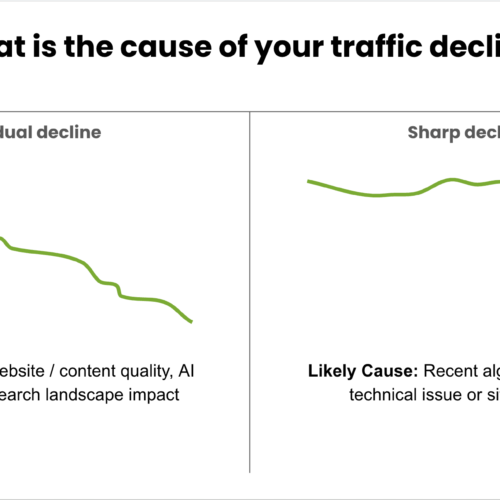Content Marketing
Quality content is the foundation of all digital marketing channels. Leave none of your digital stones unturned; follow our posts to optimize ALL your content.
Read MoreIt’s easier to understand a topic than it is to write well about it. Good writing flows off the page whereas bad writing boggles the mind. String words together the wrong way and you’ll elicit cognitive dissonance in your readership. Their minds will turn off, and they’ll look elsewhere for content.
But when you write well, readers will thank you, they’ll fawn, or they may say nothing at all because good writing is effortless to read. You know you’ve done your work well when your readers feel like they’ve done no work at all (other than the labor of thinking the thoughts and feeling the feels your writing evokes).
But like any practice, good writing is the result of honing a particular set of skills over time, and, of course, best practices exist. And we’ll provide those best practices to you, gladly, because the world is better off when there’s more good writing in it!
To begin with, the biggest obstacle to good writing is, unfortunately, you. More particularly, it’s the fear that you’re not good enough, that what you have to say isn’t worth saying, or that you can’t even fulfill the basic task of communicating information. Yes, even when your job is simply to inform, writer’s block can get in the way. Plenty of us still remembers putting off middle school papers where we were simply expected to regurgitate everything we just learned about the causes of the First World War or how photosynthesis works simply because the writing felt like work we didn’t want to do.
So how do you actually sit down to write? You just do it! You make the choice to write over and over again, slowly building up the ability to ignore your inner critic long enough that you’re able to finish your work.
Or you turn that inner critic into an inner cheerleader! Someone who tells you that you’re doing a good job every time you get a word onto the page. Because you are, in fact, doing a good job! A big part of writing is getting words onto the page. Not empty words, of course! Words that communicate feeling and meaning.
Once you’ve done that, style is a matter of personal taste. You may be stiff at first, sounding more like an automaton than a human being, but as you expend less effort worrying you’ll be able to expend more of yourself. Worry often inspires a desire for control and to play it safe; comfort means you feel freer to let yourself be yourself on the page. And suddenly your work begins to stand out not because of what it communicates but because of how you communicate.
People want to read what you have to say because it’s you saying it. As you know by now, that’s the part that requires the greatest amount of practice. But now that you know that, you’re closer to being there than you were before. And if you check back in with us, we’ll help you make some of those next steps that you may not yet know how to take so that you can get that traffic moving your way!
To begin with, the biggest obstacle to good writing is, unfortunately, you. More particularly, it’s the fear that you’re not good enough, that what you have to say isn’t worth saying, or that you can’t even fulfill the task of communicating information. Yes, even when your task is to inform writer’s block can get in the way. Plenty of us still remember putting off middle school papers where we’re simply expected to regurgitate everything we just learned about the causes of the First World War or how photosynthesis works simply because writing felt like work we didn’t want to do.
So how do you actually sit down to write? You just do it! You make the choice to write over and over again, slowly building up the ability to ignore your inner critic long enough that you’re able to finish your work. Or you turn that inner critic into an inner cheerleader! Someone who tells you that you’re doing a good job every time you get a word onto the page. Because you are, in fact, doing a good job! A big part of writing is, in fact, getting words onto the page. Not empty words, of course! Words that communicate feeling and meaning.
Once you’ve done that, style is a matter of personal taste. You may be stiff at first, sounding more like an automaton than a human being, but as you expend less effort worrying you’re able to expend more of yourself. Worry often inspires a desire for control and to play it safe; comfort means you feel freer to let yourself be yourself on the page. And suddenly your work begins to stand out not because of what it communicates but because of how you communicate. People want to read what you have to say because it’s you saying it. As you know by now, that’s the part that requires the greatest amount of practice. But now that you know that, you’re closer to being there than you were before. And if you check back in with us, we’ll help you make some of those next steps that you may not yet know how to take so that you can get that traffic moving your way!




